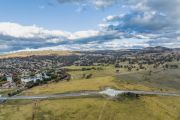
Darling Harbour operators push for new Metro station
Darling what… Darling where?
With that the big end of town is flexing its combined muscle to lobby for a new Metro station at Darling Harbour.
Representatives from The Star Entertainment, Crown Resorts, Google, Lendlease, the owners of Darling Park office complex – GPT, AMP and Brookfield, Accorhotels, Business Events Sydney, the International Convention Centre (ICC) and the Sydney Business Chamber, among others, have met and are making a case for a new Metro station.
The potential of the “Western Harbour” precinct, broadly comprising Barangaroo, Darling Harbour, Pyrmont/Ultimo and adjacent areas, for Sydney and NSW has been recognised for a number of years.
Metro hope
Advisory group PwC estimate conservatively that the incremental economic output of this new precinct will be more than $20 billion over the first 10 years, and that the precinct will be NSW’s second largest economy behind only the CBD.
Pursuing this opportunity has been hampered by the number of authorities with responsibility for managing the precinct, and the absence of an operating framework consistent with the overall precinct’s agreed strategic purpose.
The aim is to connect the area and make it more accessible to the city for tourists and businesses. Aside from the Maritime Museum, the ICC and the Sofitel, there are plans for a new Ritz-Carlton hotel, the under-construction The Ribbon W Hotel and the remaining Barangaroo Central sites.
The activity hub, located near Mirvac’s soon-to-be-redeveloped Harbourside shopping centre, would be part of the Metro West line and run in tandem to the light rail from Central Station, buses and ferries.
Jostling is strong for new stations along the planned route that will extend to Sydney Olympic Park and Parramatta. Each new station costs close to $500 million.
But there are some concerns that adding too many stations along the route will extend the travel time, which defeats the purpose of having a fast train line.
Geoff Parmenter, group executive brand and corporate affairs, The Star Entertainment Group, who is on the working committee said research suggests that ”wayfinding” to and around the Western Harbour remains suboptimal, and improvement is required if visitor experience is to be improved.
He said a Pyrmont stop on the proposed Sydney Metro West line is a necessary ”enabler of Western Harbour Precinct development and optimisation, and there is broad support for it amongst local stakeholders, including the residential community”.
”The Star views the West Harbour precinct as having all the necessary pillars to become Sydney’s premier tourism and entertainment hub,” Mr Parmenter said.
”A Metro West station servicing the precinct must be a consideration, while the prospect is there to also improve and expand waterway options as a viable mode of transport.”
Patricia Forsythe, executive director of the Sydney Business Chamber, said she was ”absolutely behind the push for a Metro station”.
”It would be a significant addition to the transport infrastructure and Pyrmont can make a strong case for a new station,” Ms Forsythe said.
”Sydney is a convenient city and can win conferences but the fact is that the area is still a 15-minute walk from the city and we need a holistic approach to get tourist and businesses into the precinct.
”We are collaborating with other key precinct stakeholders to develop plans that will realise the latent potential of the precinct, create greater awareness of its assets both domestically and internationally, and thereby drive considerable economic benefit for the city and for NSW.”
He said as a precinct of about 4500 hotel rooms, 300 cafes, restaurants and bars, and a range of convention, theatre, museum and event centre assets, the West Harbour precinct has all the hallmarks to be a significant and sustainable destination.
“The recent roundtable identified an opportunity to embrace a stretch of the harbour shoreline to provide a further tangible attraction. Further fleshed out, the development of a Fishmarket-to-Barangaroo-Headland walk was seen as a potentially distinctive, curated, and seamless visitor experience,” Mr Parmenter said.
”It could feature engaging, interactive, and perhaps changeable installations at regular intervals along the walk. In its entirety it would help bring this precinct together.”











